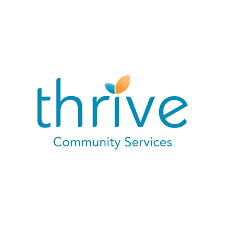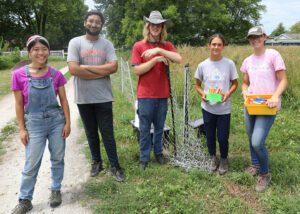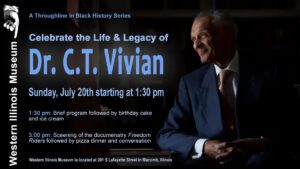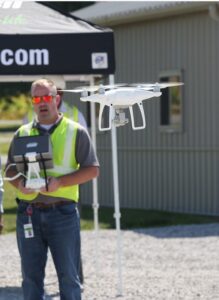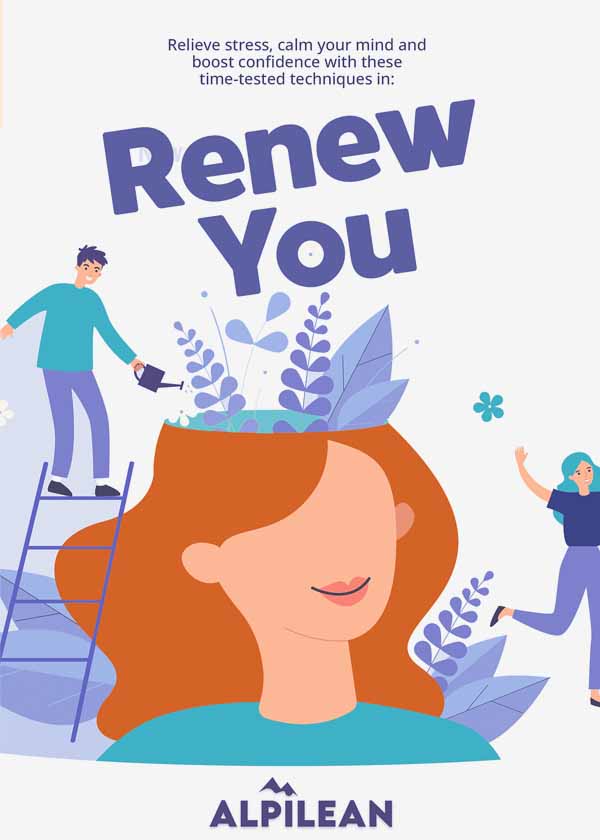Although artificial intelligence has been around for years, in some respects, it was born on Nov. 30, 2022, said Phil Ice, chief data scientist for Campus Works.
“That’s when AI became accessible to the masses,” said Ice, who gave an April talk to Monmouth College faculty and staff titled “Beyond the Buzz: Envisioning the Future of Artificial intelligence in Higher Education.”
Whether that means AI is in its “terrible twos” or its “terrific twos” depends on who you ask. Monmouth President Patricia Draves is decisively in the “terrific” camp, although she acknowledges, “We have a lot of work to do,” when it comes to managing the tool on college campuses.
“I’m invested in AI,” said Draves, who assumed Monmouth’s presidency in 2024. “Every semester, I pick an aspect of higher education to learn more about, and AI was my focus for the spring semester. It’s part of the ‘digital transformation’ piece of my five foundational pillars for the college. Technology expands your capabilities, and AI is moving faster than other forms of technology. How can we use it to expand our educational capabilities and our students’ learning?”
‘This is going to be fast’
AI is shockingly advanced for a 2-year-old, especially when compared to another major innovation.
“The past semester was about gathering information and ideas and training on tools, but next year it moves to training our faculty, staff and students on AI,” said Draves. “This is going to be fast. It’s not like the internet, which took 10 to 15 years to really evolve on campuses.”
During a talk that Dean of the Faculty Mark Willhardt – a former English professor – gave with current English professor David Wright during the recent Golden Scots Celebration, Willhardt phrased it another way.
“Ai is a disrupter,” he said. “And it’s important to remember that AI is not simply one thing. It’s changing things, and it’s going to keep changing things. When you think of the written word, the printing press (invented around 1440 by Johannes Gutenberg) was a disrupter. The internet was a disrupter.”
That’s a gap of 550 years between the first two “disruptions,” but only 30 years from the internet to AI.
One of many areas where AI and a college campus can intersect, said Draves, is the learning process.
“People are intimidated by AI, but I see it as a really good way of teaching essential concepts,” she said. “I’m interested in the personalized piece. As it learns more about you, it’s, ‘OK, you like soccer and you like to play the clarinet.’ It will use examples to keep you interested. I’m really interested in how that plays out with regard to tutoring and with driving more traffic to tutoring. It can also identify areas of weakness, both for the student and even for a faculty member, helping them realize that maybe a group of students isn’t understanding a specific concept. ‘You need to spend more time on this.'”
Draves was a college student in the 1980s, when word processing was just starting to take the place of the trusty typewriter, and the internet had not yet been born.
“It’s interesting to think of what professors’ expectations were then for students and what they can be now,” she said. “With the help of AI, those expectations had better increase. It’s all about progress.”
‘Way different’
Willhardt was also a college student in the 1980s. He was asked if in five years, AI would cause the educational landscape at colleges to be way different, slightly different or unchanged.
“Way different,” he replied. “We’ll have to adjust our definition of what counts as material. AI is agnostic,” meaning it has no stake in where the information comes from – just that it’s information. “It will affect the way we teach information literacy. The nature of what we call research is going to change.”
Willhardt used one of the many AI tools on the market to experiment with a prompt to summarize Maslow’s Hierarchy of Needs, a psychological theory.
“It’s not about books and texts anymore,” he said. “It’s about YouTube videos, TikToks, websites, podcasts. You can drag it and drop it onto the tool’s whiteboard and let it summarize it all for you. Among all the sources I gathered on that ‘hierarchy of needs’ experiment, there wasn’t a piece of text in there, except the websites.”
But there was text in the response, a neat and tidy three-page summary of that myriad of sources.
So is this like Cliff’s Notes on steroids, the dean was asked.
“That’s exactly what it is,” he replied. “But if part of our job is to teach critical thinking, you can’t turn that over to a computer.”
Striking a balance
Willhardt said one school that’s completely buying into the “way different” in five years outlook is Rochester University. As part of Rochester’s 2030 strategic plan, university faculty, staff and students are integrating and leveraging AI in their work “to enhance how they learn, discover, heal and create.” The plan is called “Boundless Possibility,” and the AI tagline is “Leveraging a revolution.”
“They’ve made AI one of their core tenets,” said Willhardt. “They want to get ahead of AI policy by making it pedagogy,” the method and practice of teaching. “They’re training their people – institutes, workshops, that kind of thing. They’re throwing money at it.
“For most of the rest of us, we’re seeking a balance between the institutional stance and each discipline’s use of AI. If you’re in an Excel-heavy discipline, there are incredible AI tools for that. If you’re in a writing-based discipline, you might be leery of AI.”
When considering terrific vs. terrible, Draves shared a very practical, efficient way that she’s personally used AI this year. While driving to the Midwest Conference Swimming and Diving Championships in Grinnell, Iowa, she was able to get some administrative work accomplished.
“I played around with it the other day to help write a policy,” said Draves of the three-hour car ride. “It replied, ‘You probably want to consider this.’ And I did – I hadn’t thought about that. It asked me questions I hadn’t thought about. And it will read it back to you. To me, it was super helpful, and it was efficient. It did all that while I was driving my car.”
Some faculty and staff are experimenting with Copilot, which is billed as “your AI companion,” using it “to help write drafts of policies, clean up email messages, suggest potential solutions to problems, those kinds of things,” she said. “Then those people can use the extra time they gain for higher-level decision-making and creativity.”
Put another way, she said, “Good AI helps you identify some of the predictive things you’d miss on your own. It helps you pull things together and connect the dots. At a college, that can help with student success and help with business success. It helps you find common denominators you might not see otherwise. It’s about looking at the data to help point out gaps where you can focus your time.”
The ultimate cheat code?
On the other, more “terrible” hand, Draves recommended the book The Coming Wave: Technology, Power, and the Twenty-first Century’s Greatest Dilemma, which is an urgent warning of the unprecedented risks that AI and other fast-developing technologies pose to global order, and how we might contain them while we have the chance.
She also pointed out a Wall Street Journal article from March 15, 2025, titled “There’s a Good Chance Your Kid Uses AI to Cheat.”
And there’s the rub. Said Ice, “Balancing innovation with responsibility is a double-edged sword. … AI is at its best when it’s helping us learn how to think and making us better at processing our own thoughts.”
“To use AI effectively as a tool, you still have to be a good thinker – you have to ask it good questions and give it good prompts to get clarity,” said Draves. “That’s what we have to teach our students.”
Willhardt agreed.
“‘Prompt engineering’ is simply good communication,” he said. “It’s not really a magical skill – it’s critical thinking.”
Joe Lazer of The Storytelling Edge touched on the need for people to not be overly reliant on AI.
“When we write first drafts, our brains light up,” he wrote. “We boost our problem-solving capabilities and learn to think more organized and coherently. … As David McCullough once said: ‘Writing is thinking. To write well is to think clearly. That’s why it’s so hard.'”
“For the past three years, our cases involving academic dishonesty have been AI-related,” said Willhardt. “It hasn’t been the plagiarism that we used to see. It’s been inappropriate uses of generative AI. In most cases, there’s not much evidence to prove it, except you just know it’s not them. It’s not their voice. … The ethics of it all needs to be figured out. Many of us use Grammarly when we write. That’s AI assistance. But it’s the matter of curating our work versus generating it. We have to put some guardrails on it. That needs to be a point of emphasis.”
Willhardt said this fall’s faculty conference, held in the days just prior to matriculation in August, will be heavy on such emphasis.
“I don’t want to be a police officer with my students. That’s an adversarial relationship,” said Wright, who, as a writing instructor, is especially guarded about the disruption that AI may cause.
“We’re going to skip some steps, and that bothers me. We’re going to skip the soul development,” he said, before mentioning that educators can use AI as a grading tool. “You know, we can get out of this altogether. We can have a computer grading papers that we as humans couldn’t be bothered to write.”
‘Human skill augmentation’
As Draves mentioned, AI can be a time-saver when it comes to certain writing tasks, and other projects, in general. Ice showed an example of a process that he streamlined through AI, which involved research, analysis and reporting. It would’ve taken him about 90 hours without using AI – with it, it was a five-hour project.
The example highlighted what Ice called “human skill augmentation,” as AI is able to do such things as automate repetitive tasks, improve decision-making, enhance collaboration and boost creativity.
“What AI cannot do,” he said, “is conduct experiments, make observations and derive insights from real-world experiences.”
All that, though, with the caveat “at least not yet.”
Currently, Ice is working toward making the AI he uses more like him or, as he called it, a “digital twin.” By constantly providing examples of his writing style, decision-making process and other inputs, “It knows how I think and operate. It can provide suggestions that are specific to how I think.”
Similarly, he said, AI can be a “living tool” in a college setting.
“You can ask faculty and staff to talk about what they do and how they do it – the virtues of our methodology,” said Ice. “It’s a large data capture. That’s the next step. It’s the holy grail – being able to provide expert knowledge to help everyone on campus – students, faculty and staff.”
Willhardt pointed to a related development.
“There are AI tools that can figure out your operational system and makes back-end tasks more efficient,” he said. “In my greatest of all possible worlds, it could be an assistant for Monmouth students – a chatbot that would help answer students’ questions or at least direct them where they need to go for answers. Basically, Siri for the college. AI is not going to replace the four-year experience, but it will support it in ways we can only begin to imagine right now.”
Way different, indeed.
***Courtesy of Barry McNamara, Monmouth College***




